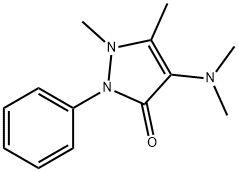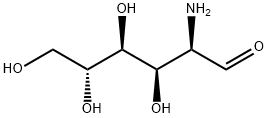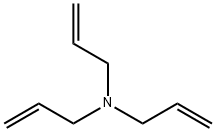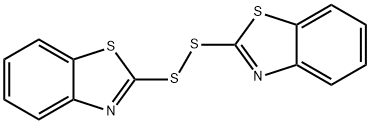6-Aminobenzothiazole
- CAS NO.:533-30-2
- Empirical Formula: C7H6N2S
- Molecular Weight: 150.2
- MDL number: MFCD00015461
- EINECS: 208-559-4
- SAFETY DATA SHEET (SDS)
- Update Date: 2024-05-21 14:26:55

What is 6-Aminobenzothiazole?
Chemical properties
Yellow solid
The Uses of 6-Aminobenzothiazole
6-Aminobenzothiazole is used as pharmaceutical intermediate.
The Uses of 6-Aminobenzothiazole
6-Aminobenzothiazole may be used in the synthesis of following:
- 1-(6-amino-benzothiazolyl)-3-chloro-5-methoxytriazine
- 6-[(4-N,N-dimethylaminophenyl)diazenyl]benzothiazole
- 6-[(2-hydroxy-1-naphthyl)diazenyl]benzothiazole
- 6-dimethylaminobenzothiazole
General Description
6-Aminobenzothiazole can be prepared from 6-nitrobenzothiazole via sonochemical reduction method.
Purification Methods
It crystallises from aqueous EtOH, pet ether or *C6H6/pet ether. The hydrochloride has m 305o(dec) from dilute HCl, and the picrate has m 185o(dec ) from Me2CO. [Boggust & Cocker J Chem Soc 360 1949, Beilstein 27 III/IV 4884.]
Properties of 6-Aminobenzothiazole
| Melting point: | 87-91 °C (lit.) |
| Boiling point: | 323.1±15.0 °C(Predicted) |
| Density | 1.2162 (rough estimate) |
| refractive index | 1.5500 (estimate) |
| storage temp. | Keep in dark place,Inert atmosphere,Room temperature |
| solubility | Chloroform, Methanol (Slightly) |
| form | Solid |
| pka | 2.74±0.10(Predicted) |
| color | Yellow to Beige |
| Water Solubility | Slightly soluble in water. |
| Merck | 14,425 |
| BRN | 116381 |
| CAS DataBase Reference | 533-30-2(CAS DataBase Reference) |
Safety information for 6-Aminobenzothiazole
| Signal word | Warning |
| Pictogram(s) |
 Exclamation Mark Irritant GHS07 |
| GHS Hazard Statements |
H315:Skin corrosion/irritation H319:Serious eye damage/eye irritation H335:Specific target organ toxicity, single exposure;Respiratory tract irritation |
| Precautionary Statement Codes |
P261:Avoid breathing dust/fume/gas/mist/vapours/spray. P264:Wash hands thoroughly after handling. P264:Wash skin thouroughly after handling. P271:Use only outdoors or in a well-ventilated area. P280:Wear protective gloves/protective clothing/eye protection/face protection. P302+P352:IF ON SKIN: wash with plenty of soap and water. P305+P351+P338:IF IN EYES: Rinse cautiously with water for several minutes. Remove contact lenses, if present and easy to do. Continuerinsing. |
Computed Descriptors for 6-Aminobenzothiazole
| InChIKey | FAYAYUOZWYJNBD-UHFFFAOYSA-N |
New Products
4-Fluorophenylacetic acid 4-Methylphenylacetic acid N-Boc-D-alaninol N-BOC-D/L-ALANINOL Tert-butyl bis(2-chloroethyl)carbamate 3-Morpholino-1-(4-nitrophenyl)-5,6-dihydropyridin- 2(1H)-one Furan-2,5-Dicarboxylic Acid Tropic acid S-2-CHLORO PROPIONIC ACID ETHYL ISOCYANOACETATE 2-Bromo-1,3-Bis(Dimethylamino)Trimethinium Hexafluorophosphate (6-METHYL-[1,3]DITHIOLO[4,5-b]QUINOXALIN-2-ONE INDAZOLE-3-CARBOXYLIC ACID 4-IODO BENZOIC ACID (2-Hydroxyphenyl)acetonitrile 4-Bromopyrazole 5,6-Dimethoxyindanone 2-(Cyanocyclohexyl)acetic acid 4-methoxy-3,5-dinitropyridine 2-aminopropyl benzoate hydrochloride 1-(4-(aminomethyl)benzyl)urea hydrochloride diethyl 2-(2-((tertbutoxycarbonyl)amino) ethyl)malonate tert-butyl 4- (ureidomethyl)benzylcarbamate Ethyl-2-chloro((4-methoxyphenyl)hydrazono)acetateRelated products of tetrahydrofuran








You may like
-
 6-Aminobenzothiazole, 97% CAS 533-30-2View Details
6-Aminobenzothiazole, 97% CAS 533-30-2View Details
533-30-2 -
 6-Aminobenzothiazole CAS 533-30-2View Details
6-Aminobenzothiazole CAS 533-30-2View Details
533-30-2 -
 1975-50-4 98%View Details
1975-50-4 98%View Details
1975-50-4 -
 2-HYDROXY BENZYL ALCOHOL 98%View Details
2-HYDROXY BENZYL ALCOHOL 98%View Details
90-01-7 -
 2-Chloro-1,3-Bis(Dimethylamino)Trimethinium Hexafluorophosphate 221615-75-4 98%View Details
2-Chloro-1,3-Bis(Dimethylamino)Trimethinium Hexafluorophosphate 221615-75-4 98%View Details
221615-75-4 -
 61397-56-6 CIS BROMO BENZOATE 98%View Details
61397-56-6 CIS BROMO BENZOATE 98%View Details
61397-56-6 -
 14714-50-2 (2-Hydroxyphenyl)acetonitrile 98+View Details
14714-50-2 (2-Hydroxyphenyl)acetonitrile 98+View Details
14714-50-2 -
 118753-70-1 98+View Details
118753-70-1 98+View Details
118753-70-1
Statement: All products displayed on this website are only used for non medical purposes such as industrial applications or scientific research, and cannot be used for clinical diagnosis or treatment of humans or animals. They are not medicinal or edible.